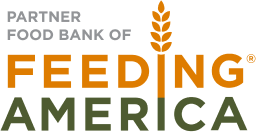The American Rescue Plan and new USDA policies support increased food security
How a recent flurry of policies at the federal level help us do our work
By Emily Gallion, Grant & Metrics Manager/Advocacy Manager, and Caitlyn McIntosh, SNAP/Outreach Lead
In the past month, we have received a lot of encouraging news from Washington about positive changes that have the potential to impact food insecurity rates in the United States. These policies cover a wide variety of programs, including the Supplemental Nutrition Assistance Program, debt relief for farmers, and more.
Here is our rundown on some of the latest policies coming out Washington:
The American Rescue Plan includes critical support for nutrition assistance programs.
The American Rescue Plan Act of 2021 (ARP), signed into law March 3, 2021, includes sweeping measures to strengthen nutrition assistance programs. These are programs anti-hunger advocates have focused on for years to reduce food insecurity in the United States.
Here some of the measures included in this legislation:
- The extension of the 15% boost to the Supplemental Nutrition Assistance Program (SNAP, formerly known as Food Stamps) through September 2021
- The extension of Pandemic EBT (P-EBT) benefits through the summer to support families with children who typically rely on school meals
- $500 million in funding for Special Supplemental Nutrition Program for Women, Infants, and Children (WIC)
- $37 million for the Commodity Supplemental Food Program (CSFP, commonly known as Senior Food Boxes) to support the nutrition of low-income seniors
Researchers at the Center on Poverty and Social Policy at Columbia University have projected that these policies, combined with others within the scope of the act (including unemployment insurance expansions and the Child Tax Credit) will cut child poverty in half.
The Foodbank, Inc. applauds the passage of these measures. While we are glad to see fewer people seeking food assistance than this time last year, many families in our area are still struggling with lost income, exhausted savings accounts, and increased debt.
In addition to lifting families out of poverty, benefits that are spent directly at grocery stores — which includes SNAP, P-EBT, and WIC programming — have a demonstrated stimulus effect on the economy. According to research from the USDA, every $1 spent on SNAP increases GDP between $.80 and $1.50.
USDA takes a closer look at equity for farmers of color.
The American Rescue Plan also includes $4 billion for debt relief for historically disadvantaged farmers and an additional $1 billion for the US Department of Agriculture (USDA) to create a racial equity commission.
While some conservative lawmakers have taken aim at this portion of the ARP, this funding is intended to offset the USDA’s history of racial discrimination against farmers of color.
There is extensive evidence that the department has discriminated against Black, Indgenous, and People of Color (BIPOC) farmers. A 1994 review of USDA loans and payments found that loans to Black males averaged $4,000 (25%) less than those to white males. Additionally, less than 1% of disaster payments went to Black farmers. The situation came to a head in the Pigford v. Glickman lawsuit, which culminated in one of the largest ever class action settlements in US history.
Advocates have pointed out that discrimination by the USDA has likely contributed to a decline in Black farmers over time. At peak in 1910, 14.6% of all farmers were Black. By 2012, the percent of Black farmers had declined 98% to only 1.6% of the total population. This racial discrimination did not start in the 1990s, either: It has roots in the Reconstruction era, when Black families were promised “40 acres and a mule” and instead were forced into sharecropping.
We are acutely aware that racial inequity is one of the driving factors of food insecurity. As participants in the larger food system, and recipients of USDA-funded product, we are glad to see Congress and the USDA working to provide reparations for past misdeeds and ensure greater inclusion in agriculture.
USDA increases SNAP benefits to lowest-income households.
The USDA announced April 1 that the department would increase SNAP benefits to households already receiving the maximum SNAP benefit, providing $1 billion per month in assistance to an estimated 25 million people.
This decision is a reversal of the Trump-era policy in which all SNAP households were issued the maximum monthly benefit. While this policy provided important support to many SNAP households, the lowest-income households who already received the maximum benefit received no increase.
Beginning in April, households that had not received at least $95/month in increased benefits will be awarded additional benefits.
According to the USDA, “Among households that [previously] received little to no benefit increase, about 40% have children, 20% include someone who is elderly and 15% include someone who is disabled.”
Research has demonstrated that SNAP households in the lowest income brackets are most likely to spend all their benefits, maximizing the stimulus effect of the program.
We are glad to see these changes applied to the SNAP emergency allotment system to ensure that very low-income households are not excluded from receiving additional benefits.
The Foodbank works with a variety of allied organizations, including Feeding America and the Ohio Association of Foodbanks, to provide education about the impact of public policies on our programming. To stay up to date on our advocacy efforts, follow us on Twitter at @thefoodbankinc.





No comment yet, add your voice below!